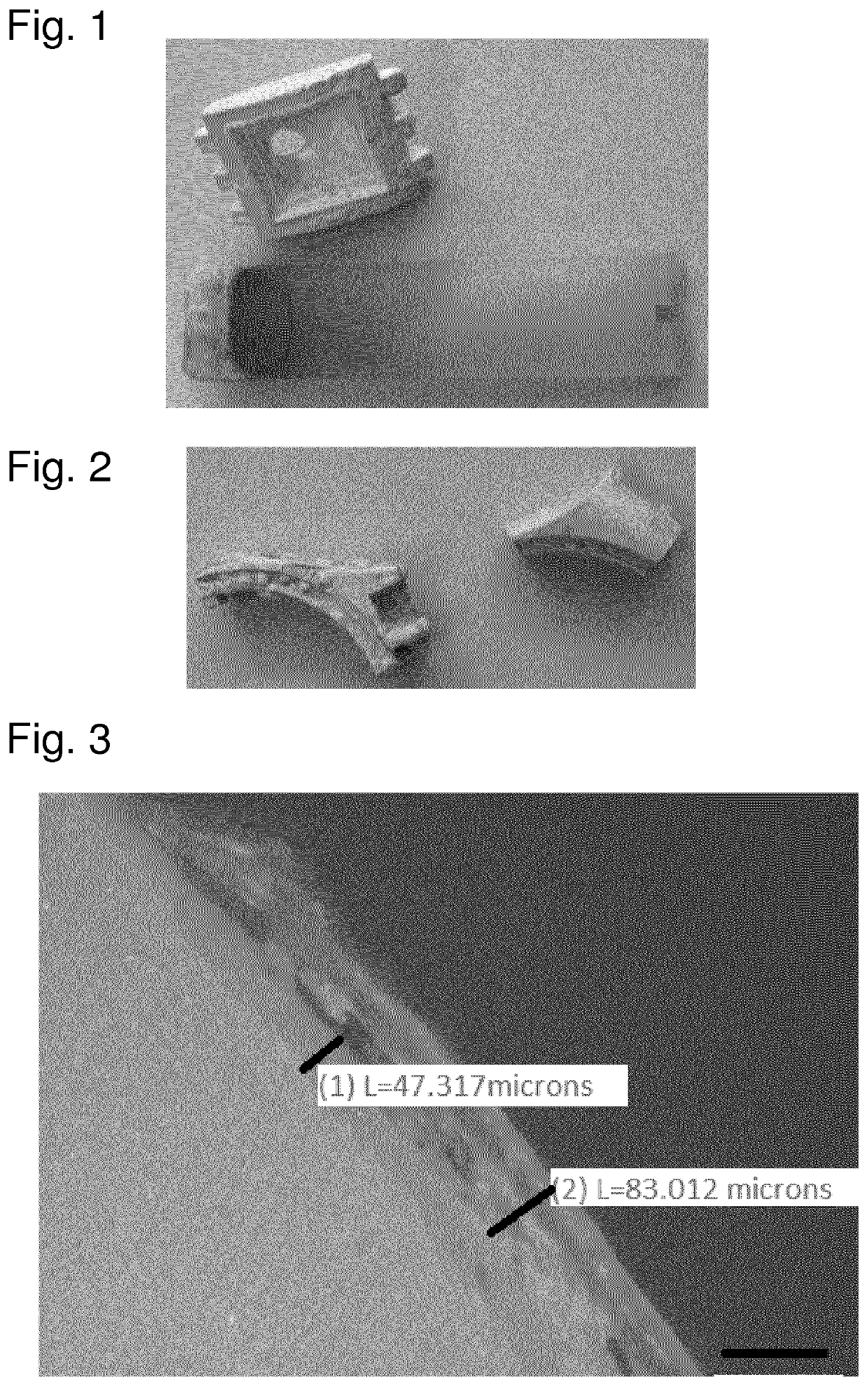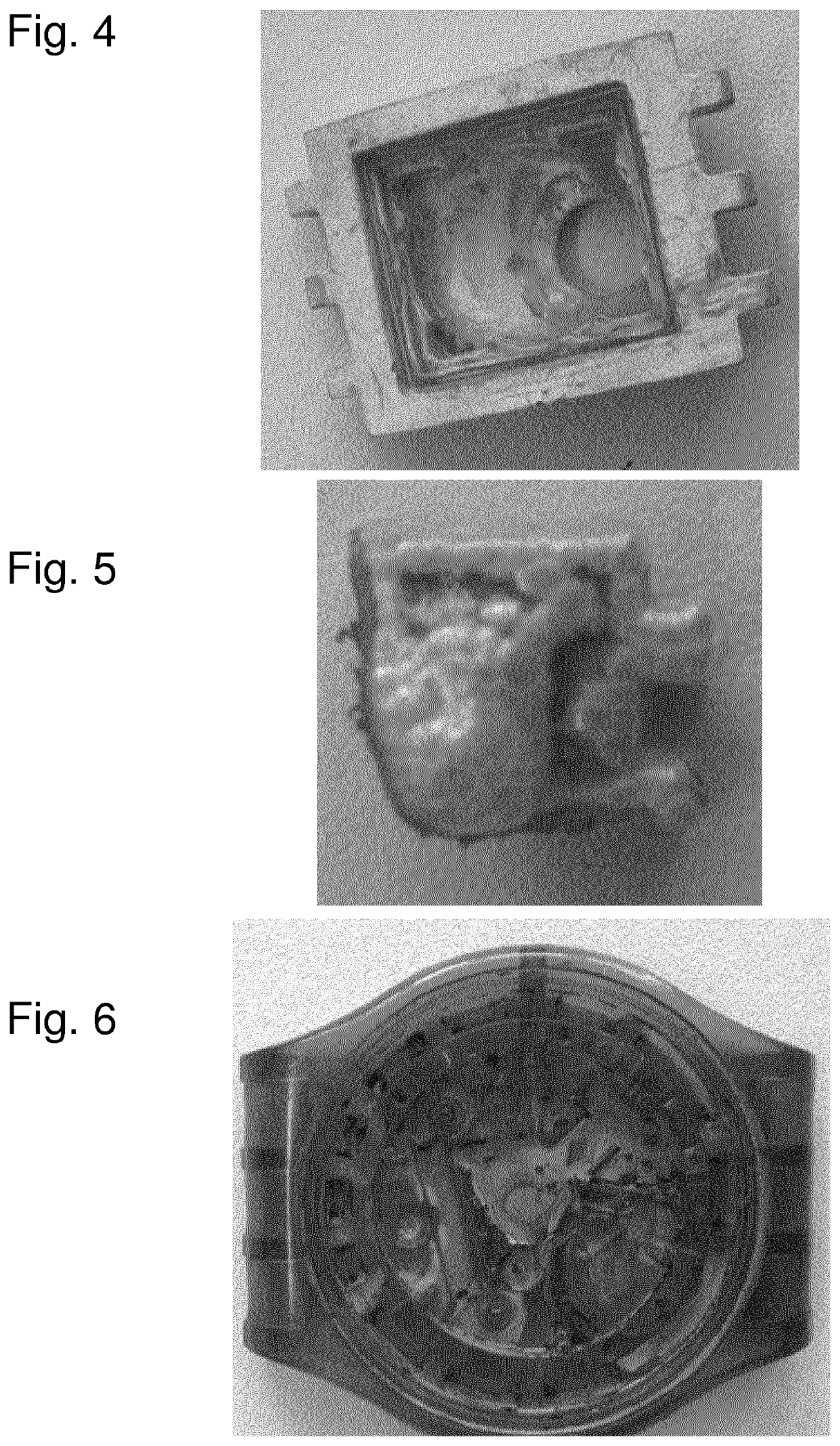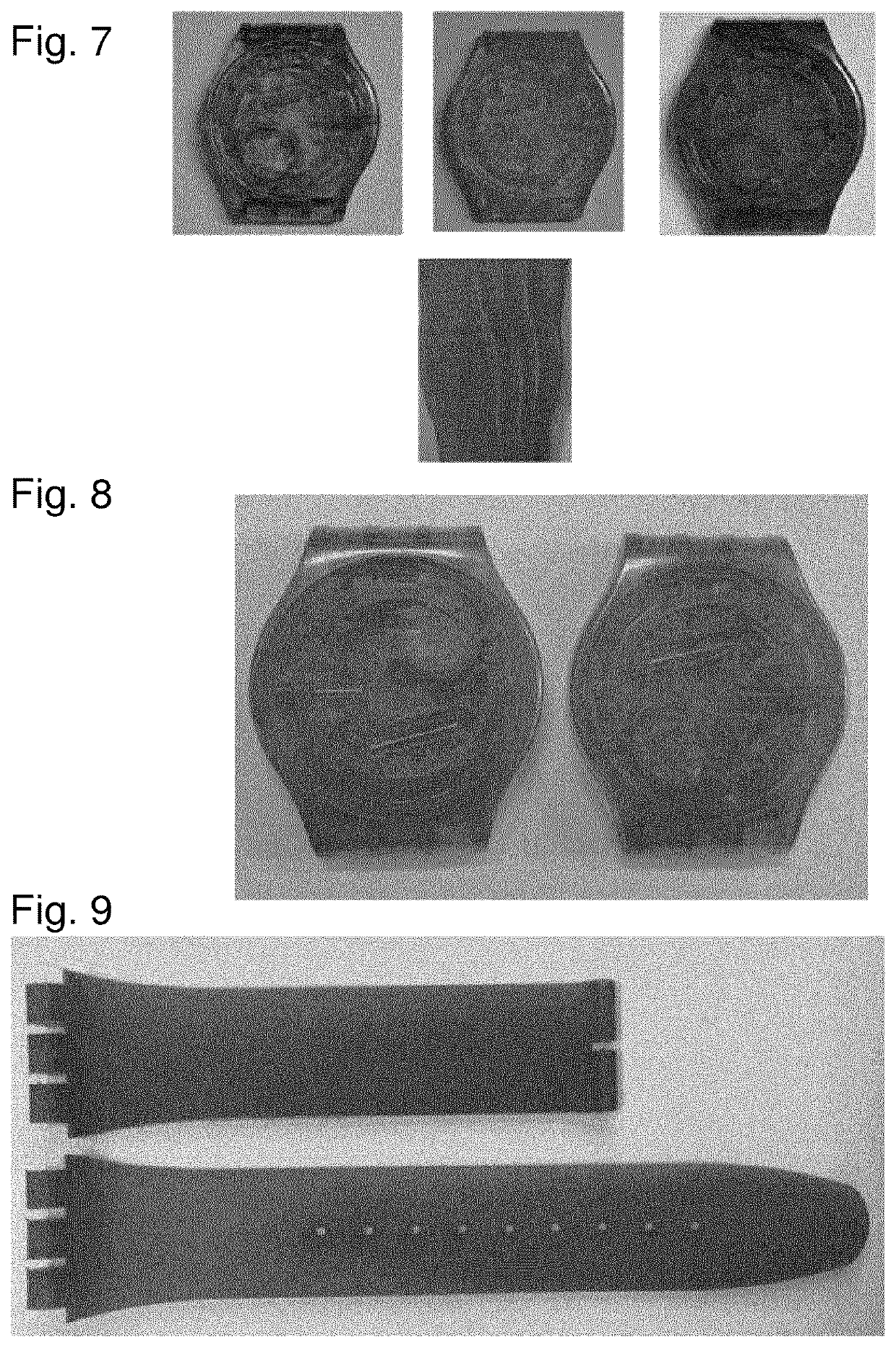Method for impregnation of a part made of plastic material
a plastic material and impregnation method technology, applied in the field of plastic material impregnation methods, can solve the problems of not having a fast, easy-to-use method, and a large amount of pressure used, so as to reduce manufacturing time and cost and increase production flexibility
- Summary
- Abstract
- Description
- Claims
- Application Information
AI Technical Summary
Benefits of technology
Problems solved by technology
Method used
Image
Examples
Embodiment Construction
[0038]The invention concerns a method for the core impregnation of a finished part made of plastic material with at least one additive. According to the invention, the method includes the following steps:[0039]dissolving at least one additive in a liquid medium to form a solution;[0040]placing the plastic part at ambient pressure in a pressure enclosure;[0041]hermetically sealing the chamber;[0042]impregnating the plastic part with the solution by means of a fluid at supercritical conditions or near supercritical conditions in the enclosure at a pressure comprised between 3 MPa and 6 MPa, at a temperature comprised between 25° C. and 65° C. for a duration preferably comprised between 1 minute and 15 minutes, and even more preferentially between 1 minute and 10 minutes;[0043]releasing the pressure in the enclosure so that the liquid medium diffuses outside the plastic part and to trap the at least one additive inside the plastic part.
[0044]For the purposes of the present invention, a...
PUM
| Property | Measurement | Unit |
|---|---|---|
| temperature | aaaaa | aaaaa |
| temperature | aaaaa | aaaaa |
| pressure | aaaaa | aaaaa |
Abstract
Description
Claims
Application Information
 Login to View More
Login to View More - R&D
- Intellectual Property
- Life Sciences
- Materials
- Tech Scout
- Unparalleled Data Quality
- Higher Quality Content
- 60% Fewer Hallucinations
Browse by: Latest US Patents, China's latest patents, Technical Efficacy Thesaurus, Application Domain, Technology Topic, Popular Technical Reports.
© 2025 PatSnap. All rights reserved.Legal|Privacy policy|Modern Slavery Act Transparency Statement|Sitemap|About US| Contact US: help@patsnap.com



